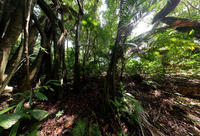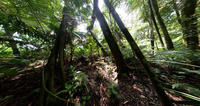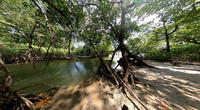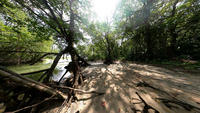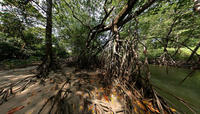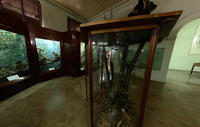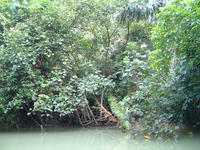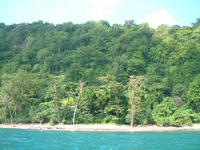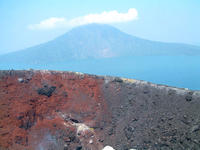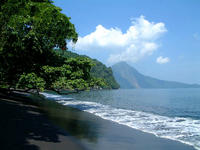You are in: Asia -> Indonesia -> Ujung Kulon National Park, and traditional search or Image Gallery will yield results of this site only
Ujung Kulon National Park
| Site number: | 608 |
|
| Type of site: | Natural | |
| Date of Inscription: | 1991 | |
| Location: | Asia, Indonesia, Provinces of Banten (formerly West Java) and Lampung | |
Up to 75 images are shown here. Click on each for more details or on Image Gallery for more images.
| Description: | This national park, positioned in the farthest south-western tip of Java on the Sunda shelf, consists of the Ujung Kulon peninsula along with a number of offshore islands and encompasses the natural reserve of Krakatoa. On top of its natural beauty and geological importance (especially for the study of inland volcanoes) it holds the largest lasting lowland rainforest area in the Java plain. The site is home to quite a few species of endangered plants and animals - the most seriously threatened being the Javan rhinoceros. --WHMNet paraphrase from the description at WHC Site, where additional information is available. For 360 degree imaging of this site, click here. | |
| Ujung Kulon National Park is located at the western-most tip of Java, Indonesia. It includes the volcanic island group of Krakatoa and other islands including Handeuleum and Peucang. The park encompasses an area of 1,206 km² (443 km² marine), most of which lies on a peninsula reaching into the Indian Ocean. It is Indonesia's first national park and was declared a UNESCO World Heritage Site in 1992 for containing the largest remaining lowland rainforest in Java. It is also home to the last fifty to sixty members of the Javan Rhinoceros species. The mainland part of Ujung Kulon was formerly farmland until it was devastated and depopulated by the 1883 eruption of Krakatoa after which it returned to its original forested state. Permits for the park are available at the town of Labuan, where there is a National Park office. --Wikipedia. Text is available under the Creative Commons Attribution-ShareAlike License. For 360 degree imaging of this site, click here. | ||
| Source: | http://whc.unesco.org/en/list/608 | |
| Reference: | 1. UNESCO World Heritage Center, Site Page. | |



